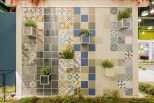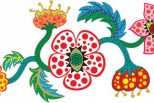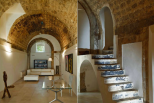“Landscape is architecture. So at One Central Park, we have created a kind of continuity between the park and…

The reconstruction of a single-family house in Sardinia, on a luxuriant green segment of the Costa Smeralda, becomes a refined game of imitation and betrayal of the typical elements and materials of the place. The usual spaces of a traditional dwelling have been subjected by the Milan-based studio of Parisotto & Formenton to a project of complete transformation.
In certain aspects the project reminds us of the work of another Milanese architect, Marco Zanuso, who about fifty years ago had his own vacation house built in Arzachena, with an exceptional blend of proximity and autonomy with respect to the stimuli provided by the site. The so-called insertion in the context, a commonplace that is the subject of infinite misunderstandings, takes the form, in this case, of an inanimate shell inhabited by an extraneous soul that takes possession of it, imposing a completely new identity. The process happens through a project based on sober, elegant expressive impact, sustained by very skillful use of mostly local materials. On the one hand, there is the pursuit of a more sensorial, domestic, intimate relationship with the stones and the colors of Sardinia, while on the other the old walls are invaded by a more interesting, reckless habitat model, that of the loft, a usually urban typology that has undergone a complete mutation. Born as an industrial space converted for mixed functions, as a studio or workshop-atelier with possible connected residence, the loft has become a true typology in its own right, especially for housing, characterized by large, fluid spaces in which work and living areas mingle in an informal arrangement.
On the one hand, there is the pursuit of a more sensorial, domestic, intimate relationship with the stones and the colors of Sardinia, while on the other the old walls are invaded by a more interesting, reckless habitat model, that of the loft, a usually urban typology that has undergone a complete mutation. Born as an industrial space converted for mixed functions, as a studio or workshop-atelier with possible connected residence, the loft has become a true typology in its own right, especially for housing, characterized by large, fluid spaces in which work and living areas mingle in an informal arrangement. In lofts rooms are no longer defined by their functions, but by their forms and materials: the true inventors of the loft in the 1960s were artists, whose public and private lives blended in a unified creative undertaking, reflected in their living space.
In lofts rooms are no longer defined by their functions, but by their forms and materials: the true inventors of the loft in the 1960s were artists, whose public and private lives blended in a unified creative undertaking, reflected in their living space. In the case examined here, the model is bent with great technical and visual skill to a new program, combining ancient materials and contemporary taste, bridging the gap between traditional local crafts and the most up-to-date design. Through the manipulation of these materials, evocative sequences and views are built, in a micro-landscape connected to tradition, but without nostalgia, in a freely innovative approach. The materials and textures are very important: drymasonry stone walls, river pebbles for the paving; steps, floors and furnishing elements in hammered Sardinian San Giacomo granite; white lime, and natural cedar for the frames of the entrance. At the center of the house a sheltered patio features river stones for the paving and the embellishment of a pomegranate tree, the pivot around which the three separate parts
In the case examined here, the model is bent with great technical and visual skill to a new program, combining ancient materials and contemporary taste, bridging the gap between traditional local crafts and the most up-to-date design. Through the manipulation of these materials, evocative sequences and views are built, in a micro-landscape connected to tradition, but without nostalgia, in a freely innovative approach. The materials and textures are very important: drymasonry stone walls, river pebbles for the paving; steps, floors and furnishing elements in hammered Sardinian San Giacomo granite; white lime, and natural cedar for the frames of the entrance. At the center of the house a sheltered patio features river stones for the paving and the embellishment of a pomegranate tree, the pivot around which the three separate parts  of the house are organized.The northern wing terminates in a wooden loggia, with flooring in large irregular granite slabs, and a roof in woven rushes, facing the swimming pool surrounded by a teak deck and protected by a glass parapet, with the sea on the horizon. From the patio one reaches the guestroom, a cool white interior that creates a contrast with the solid walls in stone, a material that fills the entire house with an archaic atmosphere. The same flooring of irregular stone continues in living and kitchen areas, while the walls in white lime, applied in vertical stripes in a very abstract, elegant Buren-like pattern, become reminders, depending on the lighting, of Mediterranean vernacular architecture, or of the nautical tradition. The intrados of the pitched roof, with its wooden structure, is completely finished in white, lightening up the overall image while generating a sense of continuity with the walls, for spatial dematerialization.
of the house are organized.The northern wing terminates in a wooden loggia, with flooring in large irregular granite slabs, and a roof in woven rushes, facing the swimming pool surrounded by a teak deck and protected by a glass parapet, with the sea on the horizon. From the patio one reaches the guestroom, a cool white interior that creates a contrast with the solid walls in stone, a material that fills the entire house with an archaic atmosphere. The same flooring of irregular stone continues in living and kitchen areas, while the walls in white lime, applied in vertical stripes in a very abstract, elegant Buren-like pattern, become reminders, depending on the lighting, of Mediterranean vernacular architecture, or of the nautical tradition. The intrados of the pitched roof, with its wooden structure, is completely finished in white, lightening up the overall image while generating a sense of continuity with the walls, for spatial dematerialization. The theme of the loggia returns in different parts of the house as an ideal living space, somewhere between inside and outside, protected but also in contact with the natural elements. The furnishings and the bath fixtures, custom designed, make use of the same materials, granite and cedar, in a choice that brings out the unity and continuity of a solid, welcoming dwelling, filled with very modern and archaic, Milanese and ancient minimalism.
The theme of the loggia returns in different parts of the house as an ideal living space, somewhere between inside and outside, protected but also in contact with the natural elements. The furnishings and the bath fixtures, custom designed, make use of the same materials, granite and cedar, in a choice that brings out the unity and continuity of a solid, welcoming dwelling, filled with very modern and archaic, Milanese and ancient minimalism. 




